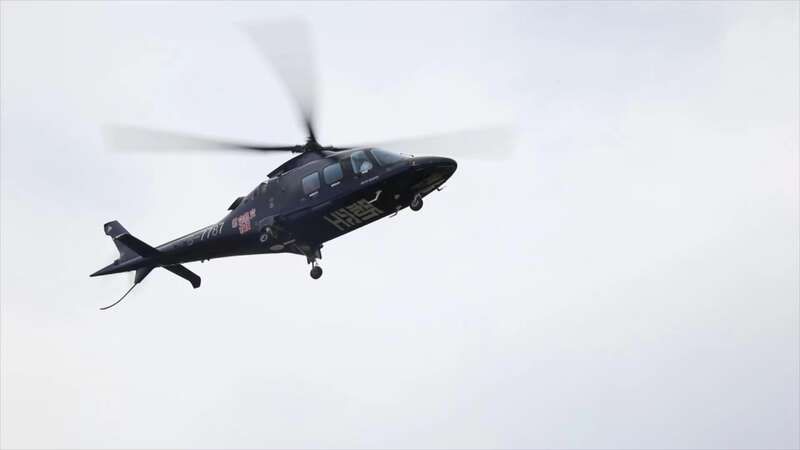Client of China Youth Daily, Shanghai, May 19 (Zhu Fan, Han Kangni, China Youth Daily, China Youth Daily reporter Wang Yejie) At 11:06 this morning, a helicopter was carrying a critically ill aorta from Changzhou, Jiangsu. The mezzanine patient successfully landed on the apron of the Ruijin Hospital Affiliated to Shanghai Jiaotong University School of Medicine. The patient was immediately taken to the Cardiac and Major Vascular Surgery Intensive Care Unit. It is reported that Ruijin Hospital has fully resumed outpatient and emergency services yesterday, welcoming many patients from other places who came to Shanghai for treatment.

A helicopter hovers over Ruijin Hospital for an alternate landing. (Photo courtesy of Ruijin Hospital)
Mr. Shen from Changzhou, Jiangsu Province is 41 years old this year. On May 14, he suffered from chest and back pain after dinner. The pain could not be relieved after rest. His family immediately sent him to the emergency department of the local hospital. He was diagnosed with aortic dissection type B Such aneurysms are in danger of rupture at any time.
Mr. Shen’s family immediately called Shanghai Ruijin Hospital for help. After the remote consultation, Wang Zhe, chief physician of cardiac surgery, believed that Mr. Shen was in urgent need of surgical treatment. “He is very young, fat, and has a history of severe hypertension. The risk of aneurysm rupture is high. At the same time, the patient’s subclavian artery and left The iliac arteries are all involved, which may affect the cerebral blood vessels and the blood supply of the upper and lower extremities, so surgery must be performed as soon as possible.”

The patient is transported from the helicopter. (Photo courtesy of Ruijin Hospital)
For such a critically ill patient, if they want to come to Ruijin Hospital for surgery as soon as possible, only helicopter transfer is the safest and fastest method, which puts forward new requirements for Ruijin Hospital.
At present, Ruijin Hospital has fully resumed basic medical services, with an average of over 6,000 outpatient visits and over 70 surgeries per day. After learning about the situation, the Office of the Aviation Medical Rescue Center promptly contacted relevant functional departments and hospital clinical departments to start the aviation medical rescue process and determine the route and route. The general aviation company also responded positively.
It is reported that this is the first air transfer patient received by Ruijin Hospital since the epidemic this year, which indicates that Ruijin Hospital has not only resumed basic medical services, but has also been able to receive emergency patients transferred from other places.

The patient was successfully transferred to the ward. (Photo courtesy of Ruijin Hospital)
“It only took one hour for the patient to arrive at Ruijin Hospital. Based on the perfect examination, we will perform minimally invasive interventional endovascular isolation of the descending aorta (TEVAR) and left subclavian artery stenting as soon as possible.” Wang Zhe introduced that in recent years, there have been more and more patients with aortic dissection. This disease is like a “time bomb” and is extremely dangerous. Patients may die suddenly at any time. Therefore, even during the epidemic, timely surgery is necessary.
“The hospital has made various preparations to open up a green channel for critically ill patients from other places. Aviation medical treatment is the fastest and most efficient method, and it has also recovered.” Chen Erzhen, vice president of Ruijin Hospital, said.